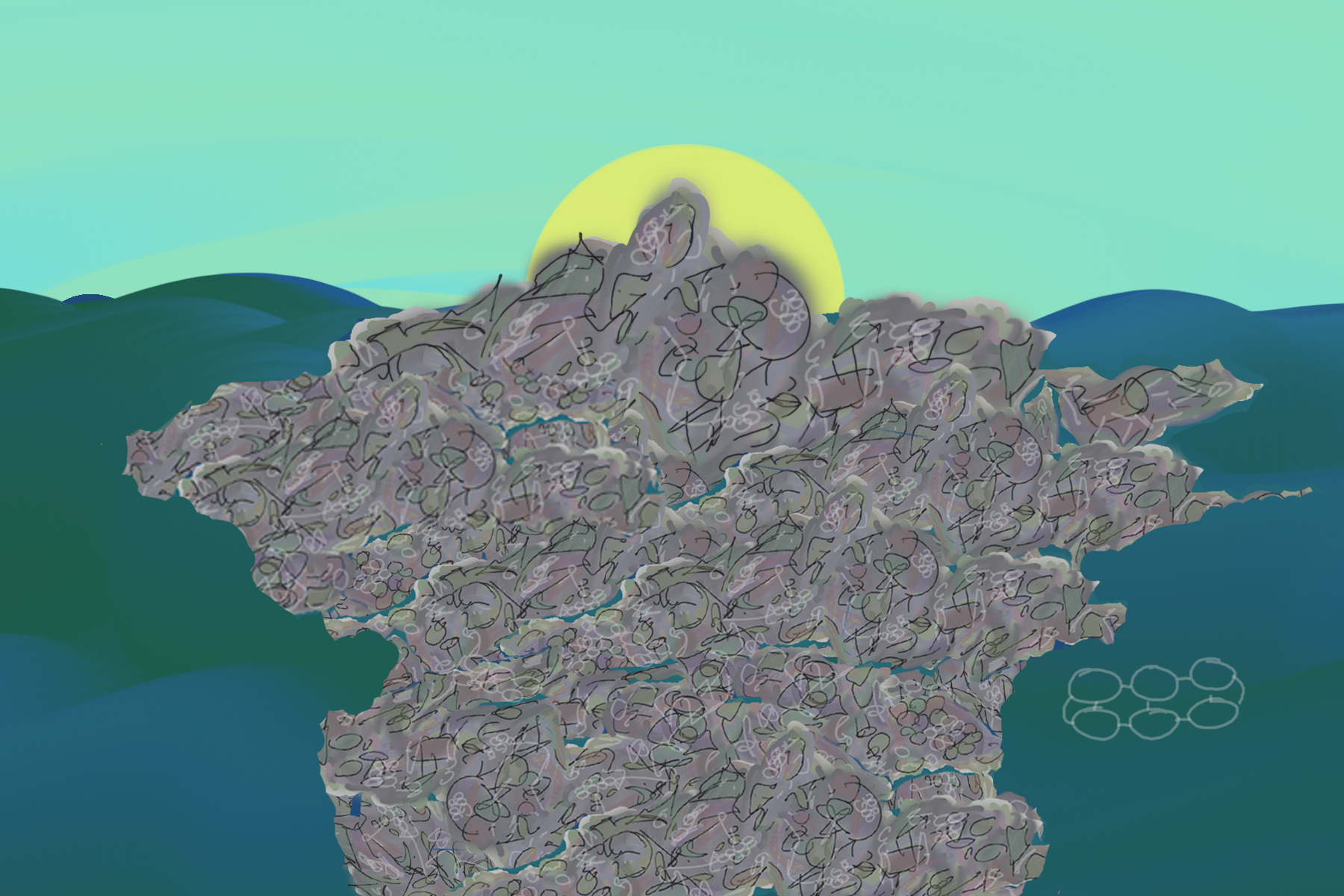Although this might sound make-believe, I assure you that there is a floating mass of garbage that consists mostly of plastic and has been dubbed the “Great Pacific Garbage Patch.” It is 100% real. Located in the Pacific Ocean, gently floating to wherever the sea takes it, lies a patch of land. Perhaps this patch of land could be considered the 51st U.S. state, since this floating landmass is estimated to cover an area stretching more than 1.6 million square miles. In fact, this mass’s size doubles the state of Texas; it’s three times bigger than the country of France, but it is not exactly any ordinary patch of land that is floating in the ocean between California and Hawaii.
The Great Pacific Garbage Patch, otherwise known as the GPGP, is the most expansive patch of garbage floating in the world’s oceans. Studies suggest that anywhere between 1.15 million and 2.41 million metric tons of plastic are making their way into the sea each year. For the sake of comparison, a single metric ton equals 2,205 pounds.
Let’s look at some statistics. The Great Pacific Garbage Patch is a single, unsinkable island of plastic and waste that weighs an estimated 80,000 metric tons — which can also be expressed as 176,400,000 pounds of plastic, the equivalent of more than 500 jumbo jets. Furthermore, it has been speculated that 1.8 trillion pieces of plastic form the garbage island, a statistic that is regrettably equivalent to every individual, living human on Earth each throwing 250 water bottles into the ocean.
Notably, the majority of the plastic that composes the mass of GPGP is less dense than the ocean water, meaning that the structure will never submerge below the water’s surface. Unfortunately, this is how the Great Pacific Garbage Patch was formed and also explains why the monstrosity grew to its exponentially massive size. Researchers have found items dating back to the 1970s, and with the Earth’s population continuing to litter, the GPGP is just going to keep growing and growing.
The GPGPs Impact on Humans and Wildlife
Obviously, GPGP is a giant eyesore, but does it have any adverse effects on humans or wildlife? Yes, it does.
With the Great Pacific Garbage Patch floating out in the middle of the ocean, you would think that it would only have an effect on marine wildlife, but the GPGP not only affects aquatic creatures, but humans as well.
Plastic outnumbers marine wildlife in the ocean 180 times over, and studies have discovered that about 700 different species have encountered debris in the sea. The majority of these species rank on the International Union for Conservation of Nature’s red list of threatened species, and one should note that the plastic making up the GPGP is toxic, which means surface-feeding marine animals will likely attempt to consume this poisonous plastic.
The human-based aspect of the issue with the GPGP involves a process called bioaccumulation, a term that describes how chemicals found in plastics will enter into the body of the animal that eats it. As these animals become prey, either by a larger animal or by humans, the toxins from the plastic can transfer over.
As you might know, certain people love to eat fish, which means humans could possibly fall ill because of the toxins in the plastic consumed by their ocean-bred delicacy. And this, of course, is a significant problem.
The Tech That Will Clean the Ocean
So what are we supposed to do? Are we supposed to just watch this toxic island float around in the Pacific Ocean?
No.
The ocean is big — very big. Using boats and nets to clean up the Great Pacific Garbage Patch would take thousands of years and millions of dollars, but System 001, created by The Ocean Cleanup, will be able to remove half of the GPGP in about five years at half the cost.
This ocean-cleaning system consists of a 600-meter long floater that sits on top of the water. This floater uses a tapered three-meter long skirt that goes under the water, which gives buoyancy to the system and prevents the garbage from flowing over it, while the skirt under the water stops the debris from escaping underneath.
The ocean’s current pushes both the plastic debris and the system floating at the surface. But because the floater is sticking partly out of the water, the wind allows the floater to travel faster than the plastic. This allows the system to trap all the debris. This system can trap the detritus floating on the ocean’s surface without harming any marine wildlife.
System 001 is equipped with state-of-the-art technology, which consists of two satellite pods, two navigation pods, a camera pod, nine lanterns and over 50 sensors; the two satellite pods allow The Ocean Cleanup team to communicate with the system. The crew can then remotely retrieve images and GPS locations as well as access the information sent back to their headquarters in the Netherlands.
These navigation pods, too, are essential, considering that each one is equipped with a weather station and an Automatic Identification System (AIS) that shares the location of the System 001 with ships within close proximity in order to prevent any collisions.
Located in the middle of the system is the camera pod. Attached to the pod are two high-definition cameras that provide a 360-degree view, and the nine lanterns are connected to the system every 100 meters, ensuring that the system is visible to other vessels that might be in the area. The 50 sensors are placed all along the system, and their job is to monitor the integrity of the system.
How You Can Help
All in all, The Ocean Cleanup’s System 101 is an amazing invention, and the creators are continually searching for ways to improve it to gain headway in the fight to remove all the plastic from the oceans.
Better yet, you can help in this fight as well. Obviously, recycling your waste is the first significant step to take, but another is to stop buying bottled water and purchase a reusable bottle. The same goes for plastic straws. While they might seem trivial, these tiny changes will prevent plastic from entering the Earth’s oceans. Every step counts.
If you are interested in learning more about the Great Pacific Garbage Patch and the technology that is going to help battle it, or if you would like to donate to support this cause, you can do so at The Ocean Cleanup’s website.
















